As a teacher with many years of experience teaching students with all types of learning styles, I have come to the conclusion that math is one of the trickiest subjects to teach. Some students understand it quickly, while others need lots of time. However, I have learned that students catch on quicker if you use hands-on activities that show them how problems work. With that being said, I have decided to help out teachers across the globe who have students that are struggling or just simply need some fun incorporated into their classroom.
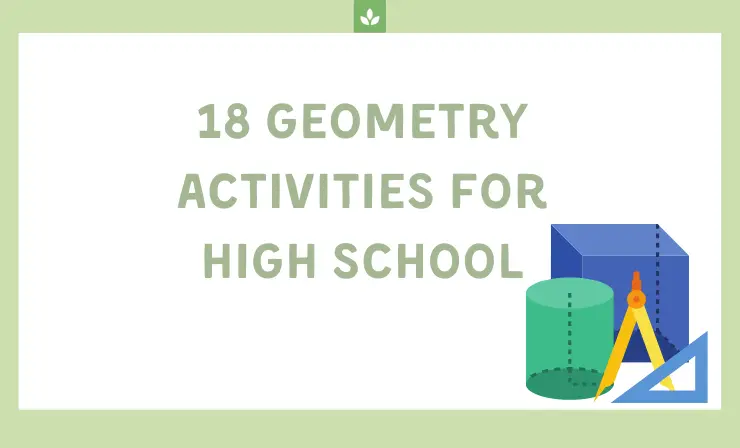
I will provide several geometry activities for high school students that you can easily include in your curriculum for the school year or term. After researching and finding over 40 different activities, I have narrowed my list down to 18, which are based on what I think works best for this age group, brings the most fun to my classroom, and increases the success rate on my geometry tests. I have tried each of these activities and vouch that they make a big difference when it comes to students learning geometry.
After reading this article, you will officially know:
- 18 geometry activities that are worth your time to try with your high school students →
- 13 requirements that a high school student must know when it comes to geometry →
18 Geometry Activities for High School
There are a variety of different activities involving geometry that you can do with your high school students. The ones mentioned in my list below have worked the best with my students. Some are harder than others, but I wanted to make sure that I chose different types of activities to tailor to my students with various learning styles.
The following are 18 geometry activities that I highly recommend trying with your high school students:
1. The Bridge Activity
What Will You Need: craft sticks, wood screws, glue, tape, and pine boards toothpicks
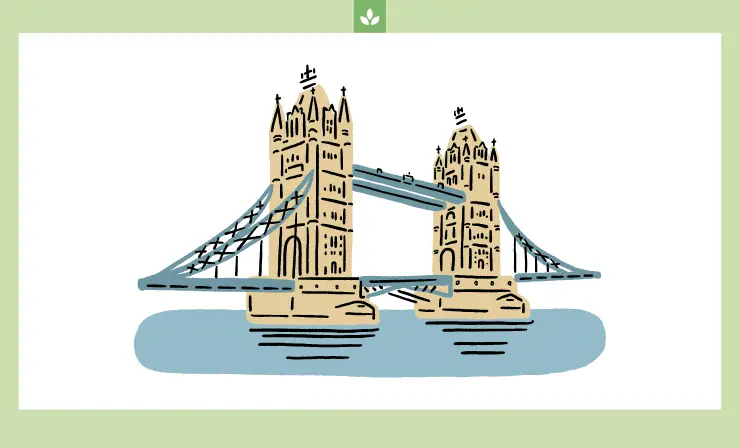
Building a bridge is a fun activity that requires focus. Your students may be so entertained by this that they may not even realize that they are learning geometry. After they have successfully built their bridges, engage them in conversation by asking what shapes were used, how much weight can the bridge handle, what a truss does, how many trusses their bridge needs, and more. After the bridges are built, let your high school students test them out and have fun with them. See how much weight each bridge can hold; high school students enjoy watching their bridges tumble.
2. Build 3D Shapes
What Will You Need: playdough or marshmallows and toothpicks
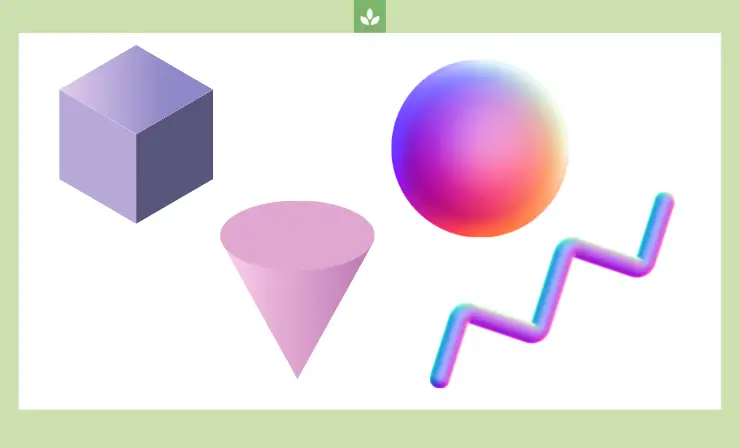
After you have handed out the necessary supplies, challenge your students to build 3D shapes such as cubes and prisms. This is a wonderful way for them to see the properties that 3D objects consist of in real life.
3. Build 2D Shapes
What Will You Need: tangram puzzles or construction paper/ felt and scissors.
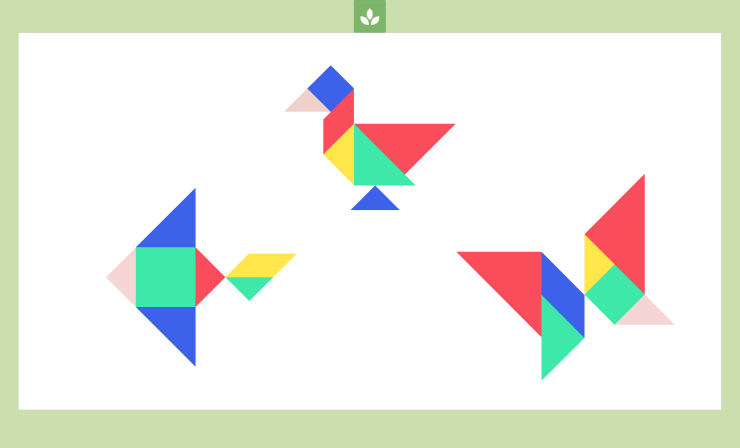
Tangram puzzles are special puzzles made in China that use seven flat, geometric shapes. These shapes form silhouettes. Most tangram puzzles are made from wood, but you can make your own out of felt or construction paper. These activity puzzles are a great option for allowing your students to take apart and manipulate their creations. By doing so, they will learn the different properties that shapes consist of.
4. Use blocks to make geometric patterns
What Will You Need: construction paper and scissors

Your students can make their own shapes out of construction paper. Encourage them to separate them by color and shape. A large part of geometry is understanding geometric patterns, which is why this activity may seem small but is very important. Pattern blocks will allow students to make patterns, practice shape rotation, and sort the various types of shapes. This is an easy activity, but you can come up with different ways to make it more challenging.
5. Solve geometric riddles with LEGO sets
What Will You Need: need LEGO blocks
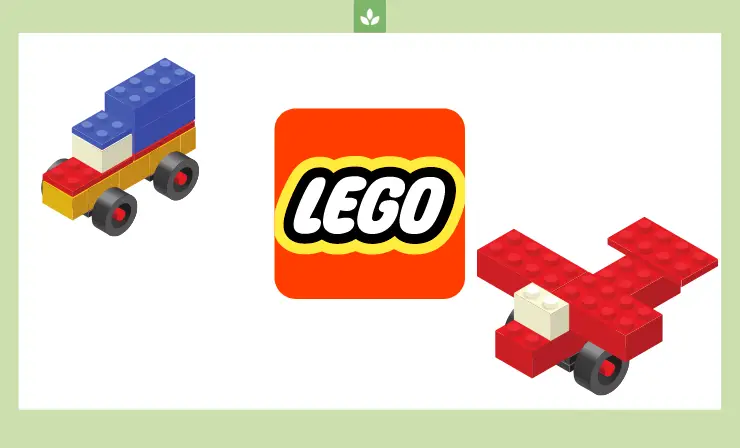
Students of all ages enjoy playing with LEGO blocks, so why not integrate them into your geometry lesson? These blocks are an excellent tool that can help your students understand the different properties of various shapes. Call out different descriptions related to 2D and 3D shapes and challenge them to create the correct object. For example, you can call out the number of sides, the lengths of the sides, and the vertices, and watch them build.
6. Use geoboards to form shapes
What Will You Need: a geoboard and elastic rubber bands
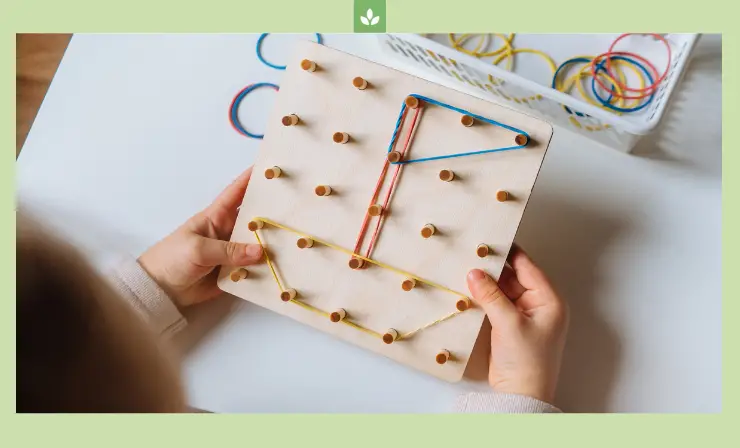
Geoboards are very common in geometry classes, and they are valuable to students of all ages who are learning geometry. The elastic rubber bands stretch over the pegboard to create different shapes. Students can play around with these geoboards and create shapes out of the elastic rubber bands. The goal is to get creative, make different shapes, describe the different properties of the shapes, and measure them. Encourage your students to make shapes that they have already learned as well as new shapes that you have not gone over yet. You can also take things to the next level by requiring them to create line segments using their geoboard.
7. Create a Geometry Scavenger Hunt
What Will You Need: various objects and shapes
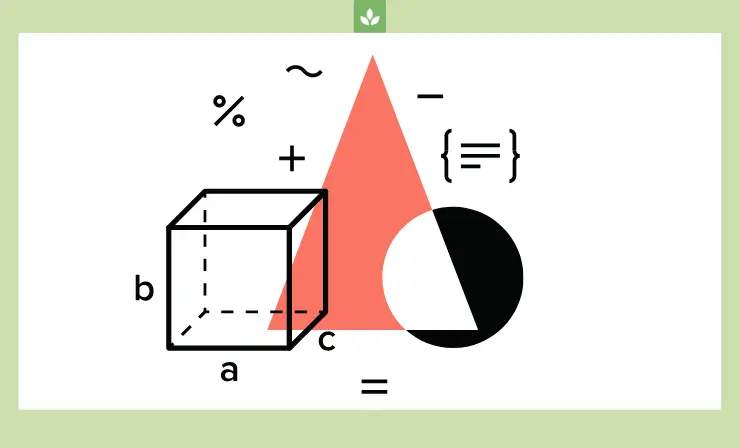
Develop a fun scavenger hunt involving geometry shapes and objects for your students to find. Encourage them to go around your classroom in search of the different objects and shapes. For example, you can tell them to go find 10 right angles, a square-based prism, and as many circles as possible. Afterwards, you can make the scavenger hunt challenging by telling your students to calculate the surface area of the shapes they found. Then, you can have each student or group describe the properties of every object or shape that they found to the entire class.
8. Play Geometry Jeopardy
What Will You Need: a jeopardy template
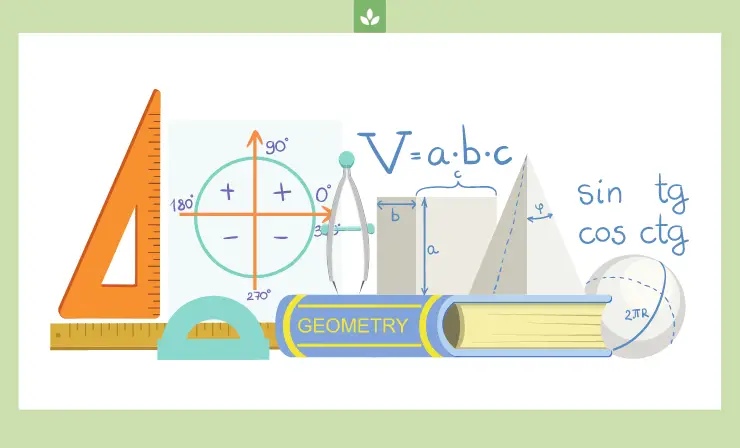
Every student loves playing jeopardy. As a matter of fact, you will most likely see your students become competitive, very involved, and rowdy. However, this is a fun game that increases students’ levels of participation, so it is worth it. Customize your jeopardy template with the topics that you are going over in class, such as geometry shapes. Tell your students to identify the shapes from the pictures as well as name and describe the properties.
9. Play Shape Bingo
What Will You Need: Bingo card templates and items to cover the squares
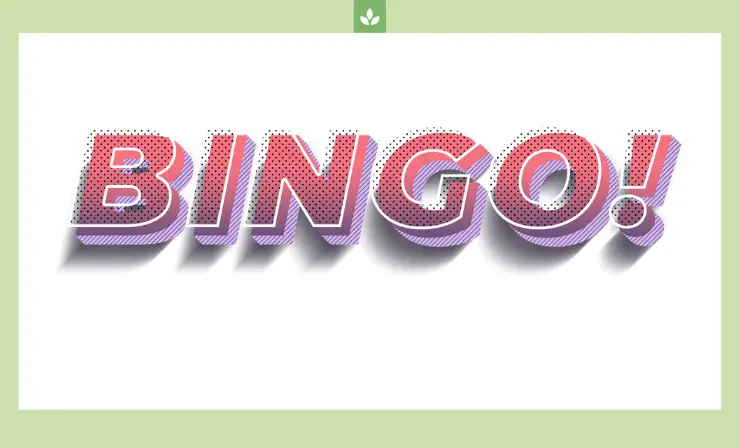
Playing the classic game of bingo is always a great time! Put a geometric shape in the squares and hand out the bingo template cards. You can name the shapes and have your students identify them or describe the shapes and see if your students can choose the correct squares to match them. The first student to cover a full row yells out BINGO!
10. Color in a polygon quilt
What Will You Need: A sheet of paper with the polygon quilt game on it
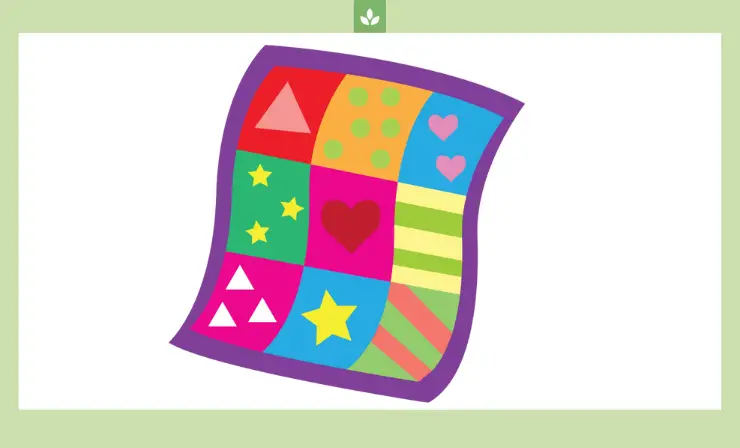
The polygon quilt game is a sheet of paper that encourages students to find the hidden polygons. If they find a square, they receive one point. If they find a triangle, they receive two points. Finding a rectangle will earn them three points, and a parallelogram will earn them four points. The students will take turns coloring in four connected triangles, and they will earn points for whichever type of shape they create. This is a fun and exciting way to practice learning different polygons.
11. Create a Quadrilateral Family Tree
What Will You Need: construction paper and markers to create quadrilateral family trees
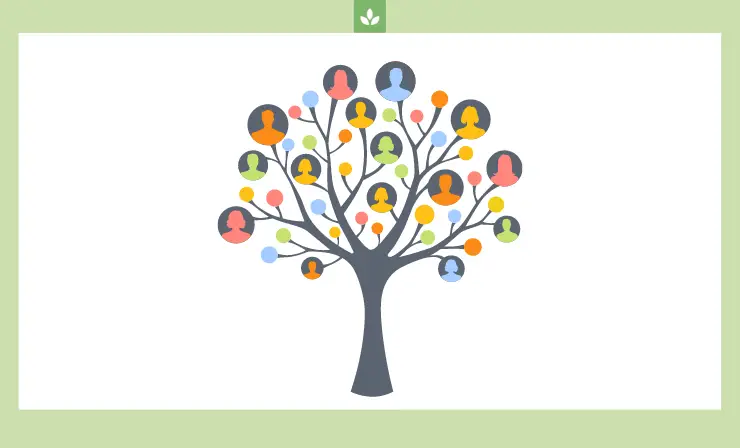
Students may have a lot of different questions when it comes to shapes. For example, my students have asked me if a rectangle is a square as well as if a square is a rectangle. These questions may be difficult to explain to students. Therefore, you can encourage your students to participate in a quadrilateral family tree to help them understand how to classify shapes. They will be able to explore, ask questions, and see the different shape families.
12. Have a fraction war with dominoes
What Will You Need: dominoes, construction paper, and markers
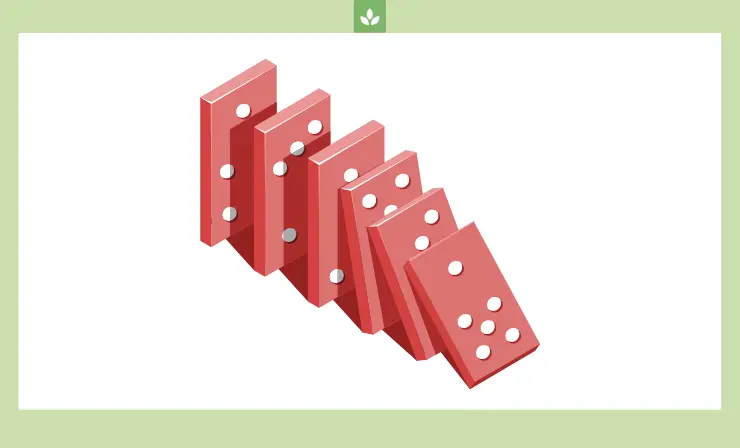
Each student takes turns selecting a domino and positioning it as a fraction. Two people will compete at once and see whose is larger. The winning student gets to keep both dominos. They can place the dominos on the construction paper and write out what the fractions are to compare.
13. Have a fraction war with cards
What Will You Need: playing cards
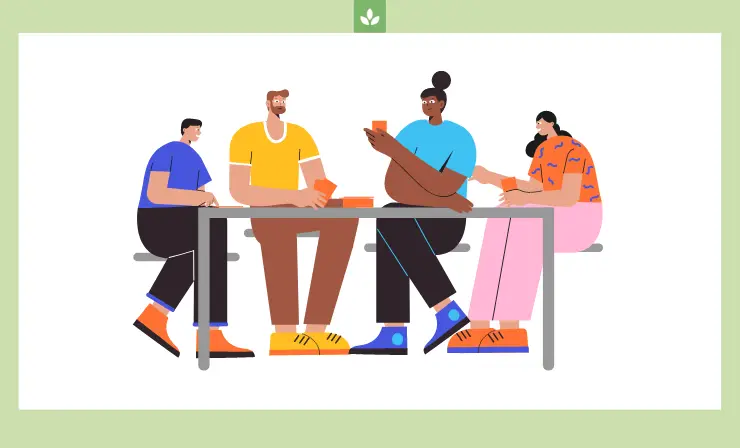
Have each student select two playing cards each to create fractions. One of the cards will be their numerator, and one will be their denominator. After looking at each student’s cards, encourage them to determine who has the largest fraction. The winner will keep all four cards and continue to the next round until all their cards are gone.
14. Play geometry go fish
What Will You Need: construction paper, stickers, and markers
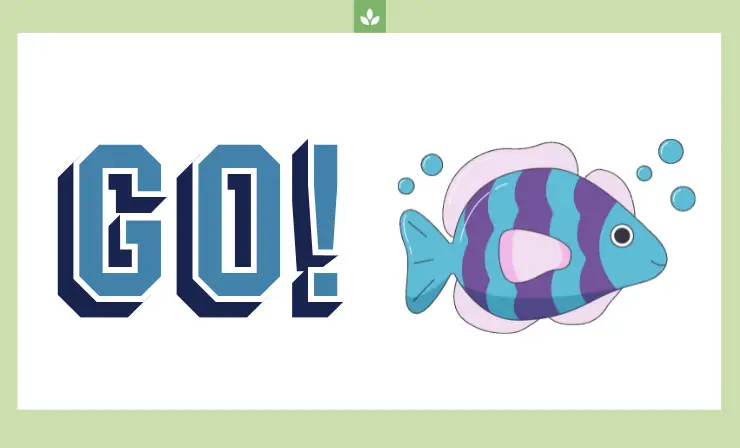
Since the vocabulary of geometry is very important, playing geometry go fish can be a fun way to help your students gain better comprehension of the words used in geometry. Create go fish cards using construction paper and markers. Allow your students to pair up and play go fish. By doing so, students will gain better comprehension of the geometry language.
15. Fold shapes to find symmetry
What Will You Need: construction paper and markers
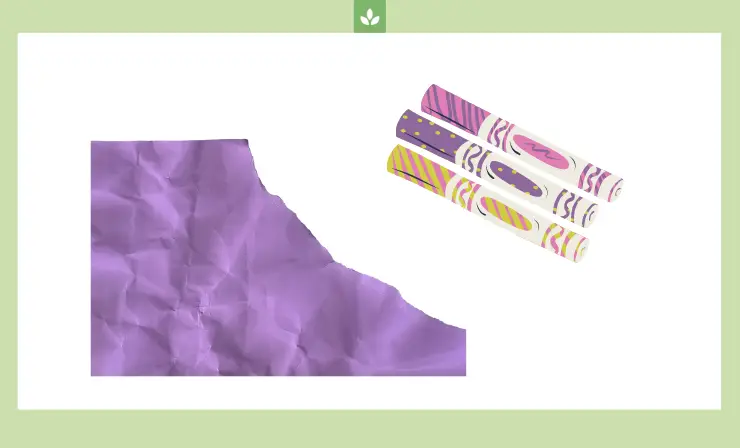
Encourage your students to form groups and hand out construction paper. Tell them to create different shapes with the construction paper. After they have created different shapes, have them fold the shapes to see which ones are symmetrical. Go even further to have them determine how many lines of symmetry each of their shapes have.
16. Have a Decimal Snowball Fight
What Will You Need: paper, construction paper, and markers
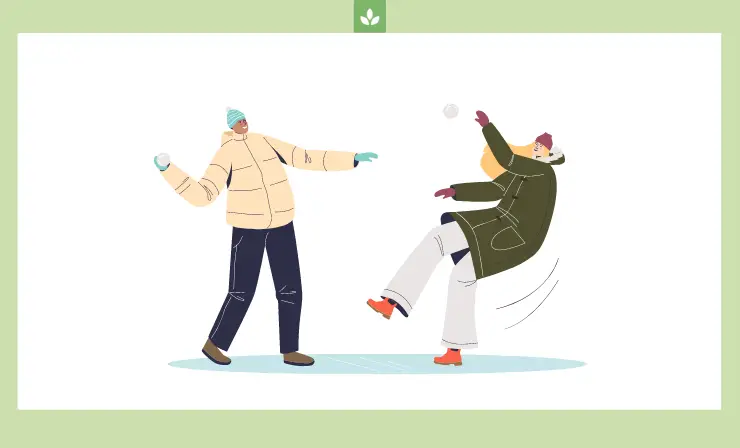
Hand out a stack of decimal snowballs to each student and place them face down. These consist of construction paper cut out into the shape of snowballs. They each will have a decimal number written on them. When the student flips them over to reveal the decimal number, they can begin to compare their numbers. The individual with the largest number gets to keep both snowballs.
17. Battle with Area and Perimeter
What You Will Need: dice, graph paper, and markers
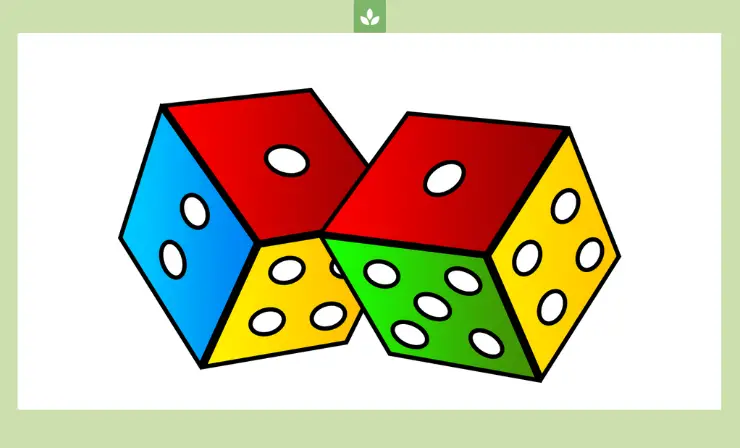
Let your students roll the dice to see the dimensions of their next rectangle. Afterwards, they should mark it on the graph paper. Have them pair up and see who can fill the page first. To make it more challenging, encourage your students to write the perimeter and area in each block.
18. Use Pencil and Paper to Draw out Geometric Ideas
What You Will Need: paper, pencil, markers, rulers, compass, and protractors
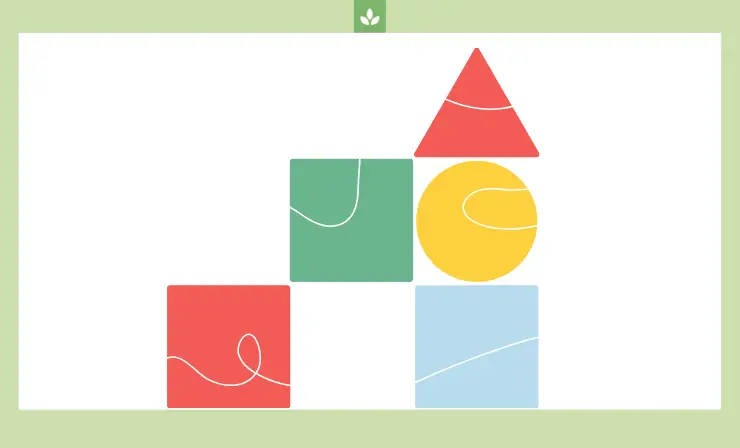
Although this activity may not seem as entertaining, it will help your students a lot. Students memorize and learn new things by writing them out. Therefore, you should guide them to practice drawing and writing out their geometric shapes and make notes along with them. They can use rulers, compasses, and protractors to create the right angles, lines, and vertices. When they are done, you can place them around your classroom to refer to often during geometry class. This will also show them how proud you are of their hard work on this activity.
To see a video of a few hands-on activities dealing with triangles in geometry class, check out eHowEducation’s YouTube video below. This short video is very informative and goes in depth on how to incorporate triangle activities into your geometry class.
One of the best purchases that I have made for my classroom is an interactive whiteboard. This was an incredible purchase because I can use this device to play games and do activities with my students that go along with the lessons that I am teaching. For more information about interactive whiteboards, consider reading my other article by clicking here.
If you are a parent who homeschools your child and need a recommendation for chapter books to keep your younger child occupied while you teach your other child, this article will help you. It goes over 25 different chapter books for first graders and young readers who you need to keep busy but also help them grow as readers.
13 Requirements of Geometry Knowledge for A High School Student
According to Seattle Pi, the Common Core State Standards states that students must “be familiar with the concepts of Euclidean geometry, as they can be applied in miscellaneous situations, from estimating the amount of building material needed for a construction project to rendering computer graphics.” When it comes to high school math proficiency, students must also be able to interpret geometry, understand congruence, symmetry, transformations, and similarity. The end of term tests will also examine your students’ ability to solve geometric problems, such as determining volumes, side, and arch lengths. They will also be required to look at different dimensional shapes with a focus on triangles and circles.
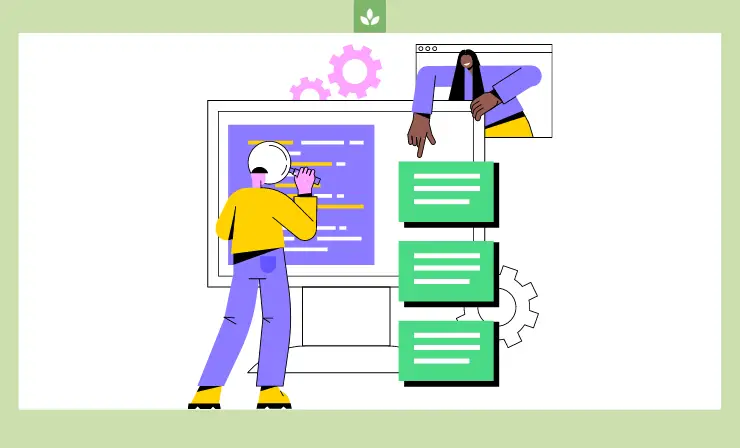
There are certain objectives that teachers must try to meet to ensure that their students fully comprehend everything they need to know before moving on to the next level of math. Below, I will list some of the objectives for high school geometry students.
- Analyze the properties and know the attributes of two- and three-dimensional objects
- Explore similarity and congruence in two- and three-dimensional objects as well as solve problems about them
- Establish geometric conjectures using critique arguments, prove theorems, and deduction
- Determine angle measurements and lengths using trigonometric relationships
- Learn how to use conjectures and solve problems involving two- and three-dimensional objects
- Use coordinate systems (polar, navigational, and spherical) to analyze geometric systems
- Comprehend translations, rotations, dilations, and reflections by using coordinates, sketches, vectors, matrices, and function notation
- Use different representations to understand simple transformations and compositions
- Draw and build representations of two- and three-dimensional geometric objects using different tools
- Visualize various three-dimensional objects from different perspectives and determine their cross sections
- Use graphs to solve problems
- Use a variety of geometry models to gain understanding and insight as well as answer questions
- Use geometry to solve problems in other areas of interest, such as art, architecture, or other parts of mathematics
Here’s an example of how one of teachers decided to explain geometry to her students.
Mrs. Tuttle’s students created and analyzed intersections of points, lines, and planes in Geometry today! #handsonmath #APride #shareourstory! pic.twitter.com/gnezctJ19A
— Angola High School (@AHSNation) August 16, 2022
If you would like to see another video that shows an interesting geometry activity, take a look at MathsPathway’s YouTube video. This is a nine-minute video that shows you a fun activity to do with your students who are learning about triangles in geometry. He goes over everything you will need as well as how to carry out this activity successfully. It is a neat activity that I think will benefit your classroom and students.
Lastly, my advice is to purchase a camera for recording lectures if you have students who are struggling or need more time. Doing activities with them is great, but you eventually do have to move on in the curriculum or you will get behind. Therefore, if you buy a camera for recording lectures, your students can go back and listen to your past lectures and lessons at any time. They will be able to take their time until they fully grasp the knowledge.
Useful Recourses
- Best 10 Geometry Books To Read This Year
- Teaching Tip: Teaching Geometry Concepts
- 9 Classroom Management Tips for Teaching High School
Conclusion
I hope this article helped you find the best geometry activities for high school. I am confident that my list of activities is perfect for this age group and will provide lots of laughter, better comprehension, and more fun in the math classroom. My suggestion is to try them all because I guarantee you will find at least a few that works for you and your students. In fact, I believe you will start seeing a difference rather quickly. The reason for this is because hands-on activities bring your students together to work on problems as a team as well as learn new and helpful ways that problems can be done. Good luck and happy teaching!
- Overview of 22 Low-Code Agencies for MVP, Web, or Mobile App Development - October 23, 2024
- Tips to Inspire Your Young Child to Pursue a Career in Nursing - July 24, 2024
- How Parents Can Advocate for Their Children’s Journey into Forensic Nursing - July 24, 2024

I think that such activities can be used not only for high school students.
It’s true, the activity can be used for younger schoolchildren as well